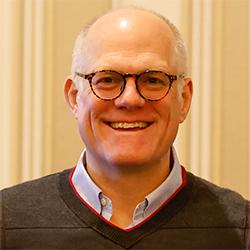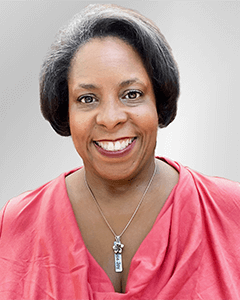Learning Forward’s 2023 Annual Conference highlighted a theme of “Evidence into Action.” Not coincidentally, some of the featured conference speakers and sessions could easily be reframed as the reverse: “Action into Evidence” as we seek greater opportunities to generate rigorous research on effectiveness. Perhaps even more accurately, “How to drive change while learning from evidence over time” could be a description too. While that’s too much of a mouthful to be a conference tagline, our final conference keynote speaker, Brandi Hinnant-Crawford, offered a hard-hitting reflection on how using evidence in continuous improvement processes can lead to more equitable outcomes for students, themes we hope stick with all conference attendees. Similarly, these themes were echoed in our concurrent session on how we run improvement networks at Learning Forward. So, how do learning networks, evidence, and the pursuit of equity fit together? For this blog post, we’ll focus on one key aspect of the work: who’s involved and what roles they play.
Learning Forward’s improvement networks do not follow a set formula but do adhere to a set of key design principles that have been refined over decades of network initiatives with diverse membership structures and problems of practice. Recent initiatives have included participants ranging from state-level policy makers through to classroom teachers, and content foci as broad as middle-school mathematics to professional learning strategy. Across all of these, the three key questions of improvement science methodology shared by Hinnant-Crawford help guide our network designs by reflecting on both who is impacted by the work, and who is involved. They are:
- What are we trying to accomplish?
- How will I know if the change is an improvement?
- What change might I introduce and why?
Each question offers an opportunity to reflect on critical structures to make the work successful. First, What are we trying to accomplish? Defining success isn’t necessarily as easy as it sounds. Hinnant-Crawford offers two sub-questions: Who benefits? And, Why is it important? Learning Forward’s improvement networks tackle complex problems where members benefit from peer exchange and innovative learning models, and also where the common problems of practice also offer optimism for innovation and untested pathways for change. The network design conversations must begin with a check on equity design principles: are we benefiting the teachers and students that need it most? If not, why not? We must also seek clarity around who will benefit if the work is successful. It’s not enough to just say “students” or “teachers” – we need to be specific about the goal of the work because it helps us define our measures of success. Discussing the question, “why it’s important” forces us to bring data and evidence on the magnitude of the problem we are tackling. It’s hard to generate enthusiasm and reach network consensus on someone’s pet project that will have limited impact.
Discussions around defining success and their resulting design insights segue nicely into the next question, How will I know if the change is an improvement? Again, two sub-questions offer further prompts for detail: Who defines what it means to improve? And, Whose values are being represented and included? Our minds might jump too quickly to simply picking a set of metrics to guide our measurement efforts, and the first sub-question of who defines success offers an opportunity to discuss levels and timing of measurement (Is this a student measure set by the state? Or by school leaders? A teacher measure set by central HR? Or co-determined with a coach? Are the measures sufficiently timely to offer useful feedback?) The prompt also allows for critical equity-based discussions such as whose voices are being represented in the decision making or addressing historical power imbalances. The next question, focused on values, takes this one step further and asks us to articulate what those values are and who they belong to. Are the desired values being represented? The questions around measurement are foundational for the network architecture, as the system of measures establishes the basis for participants to exchange insights on progress and helps retain a dispassionate honesty throughout the life of the network experience.
Finally, What change might I introduce and why? In most of Learning Forward’s improvement networks, participants select change ideas or interventions that are driven by the cumulative research corpus on a given problem and a deep, local contextual understanding that guides prioritization of what to try first. However, these design decisions imply a need to reflect on several key decisions. Again, Hinnant-Crawford offers two guiding questions. First, whose values are being incorporated? Like the issues described above in the selection of network measures, selection of what change to pursue should force a similar discussion around values and careful attention to whose voices are being represented. Finally, and perhaps most important to the practical planners among us, who bears the burden and labor of implementing the change? As so many educators face difficult conditions of overwork, underpay, increasing complexity and fragmentation of time, it’s critical to design an experience that factors these challenges into a realistic model. Indeed, pursuing approaches where participants can experience “net less work” is a key Learning Forward design principle.
The 2022 Standards for Professional Learning offer renewed focus on equity in how professional learning is structured in schools. The three questions above are a pragmatic approach to unpacking some of these issues in network design. Future blog posts will focus on other key Learning Forward design elements.
Resources:
Watch a segment of Brandi Hinnant-Crawford’s keynote presentation, “Measurement & Liberation: [Is There] Evidence We’re On the Way?” from Learning Forward’s 2023 Annual Conference.
Read The Learning Professional’s latest Networks at Work column, “Educators engage with curriculum as learners,” by Elizabeth Foster.
Learning Forward Networks leverage learning teams to design and implement professional learning interventions using disciplined inquiry and problem-solving that leads to improved practice through continuous improvement.








